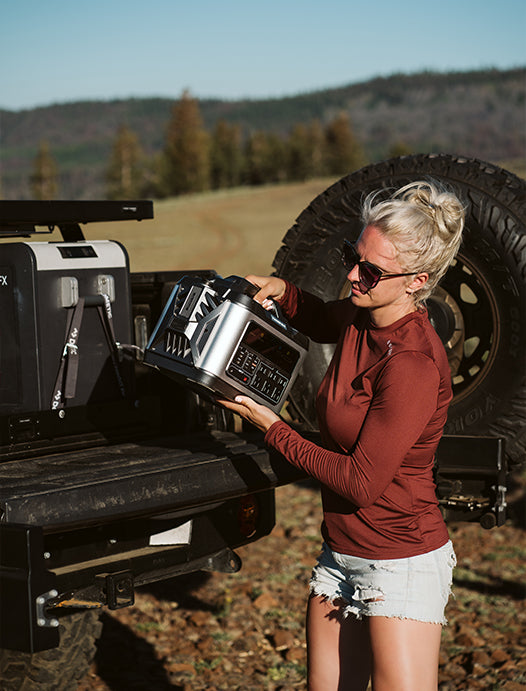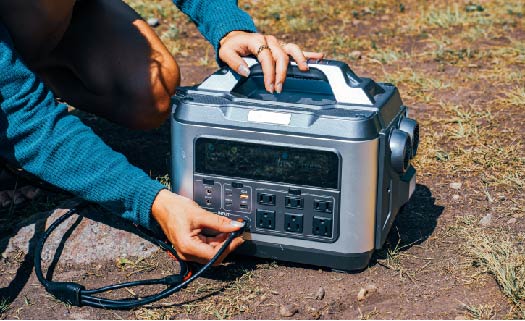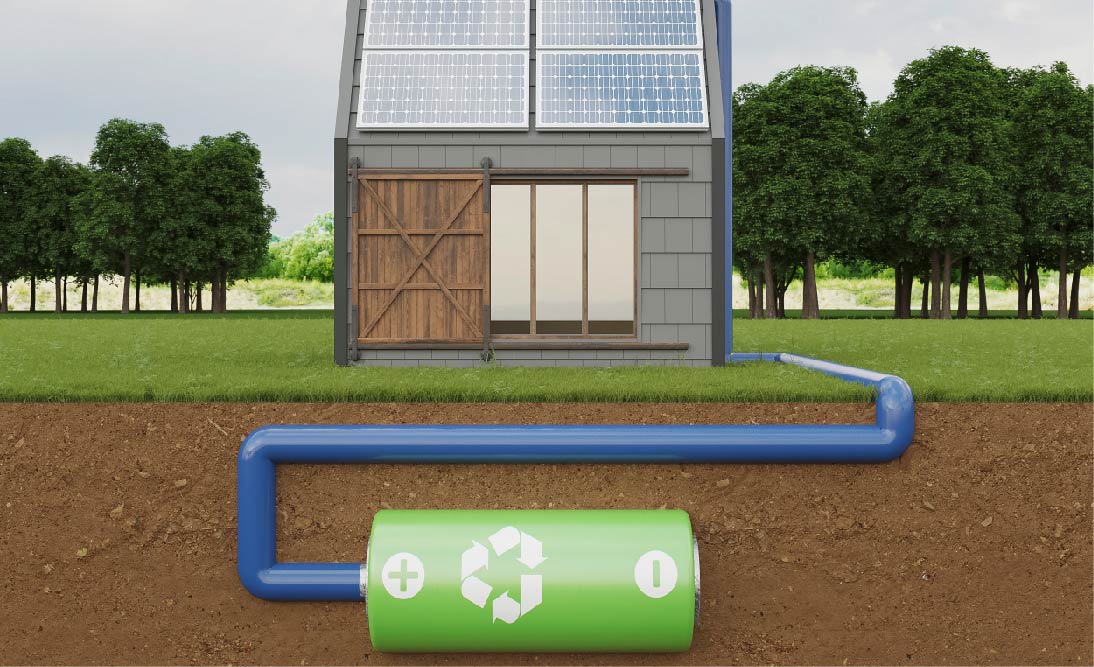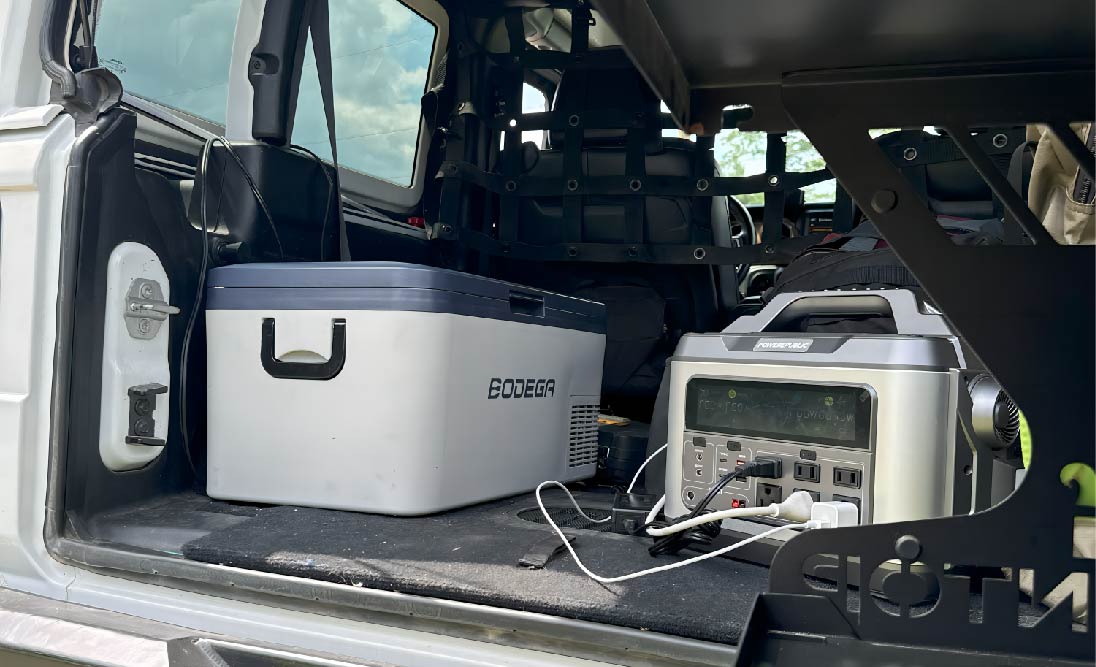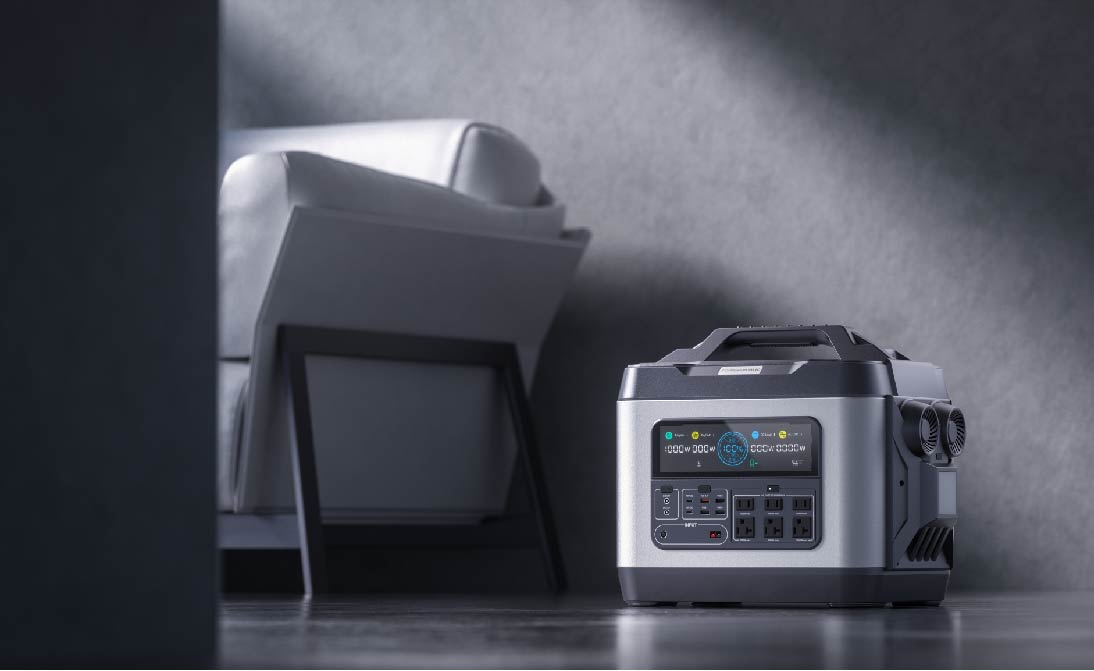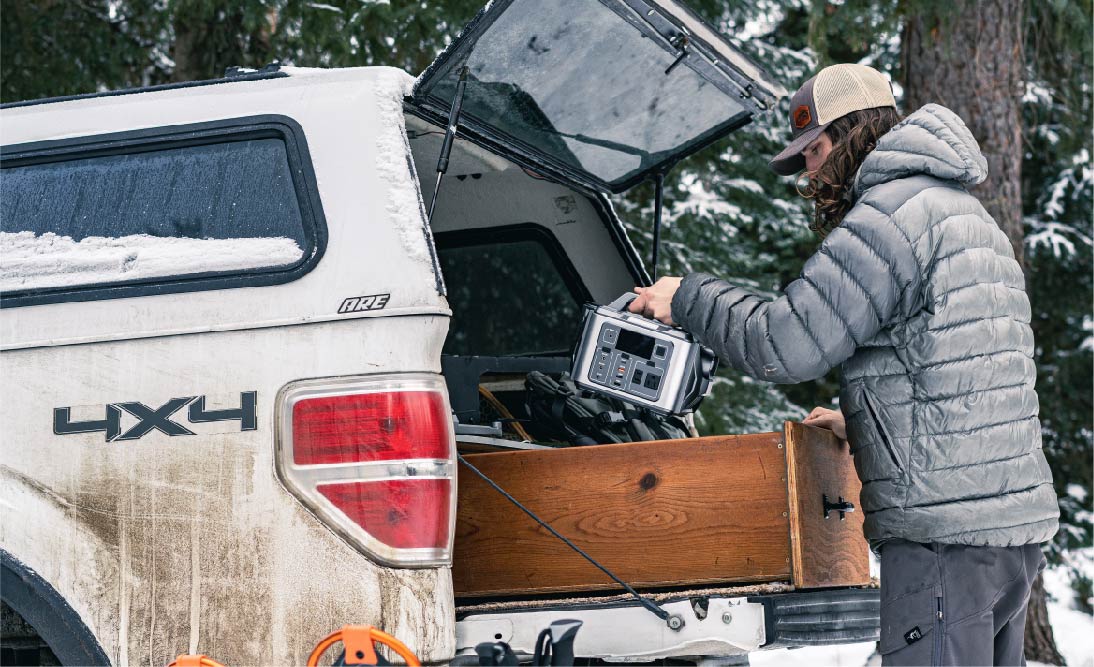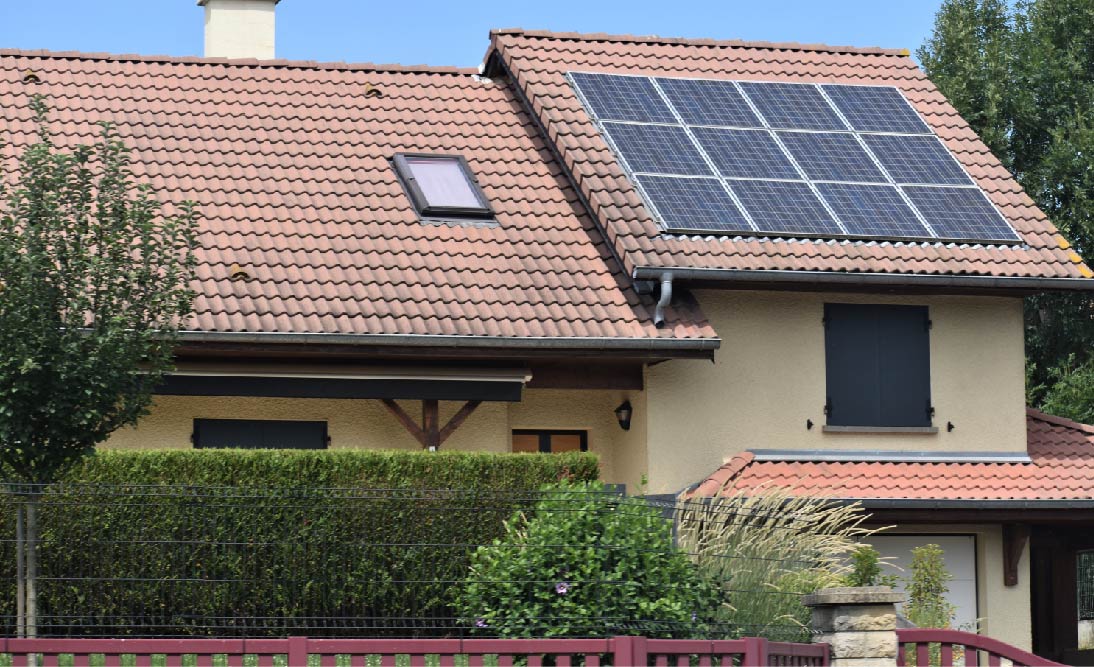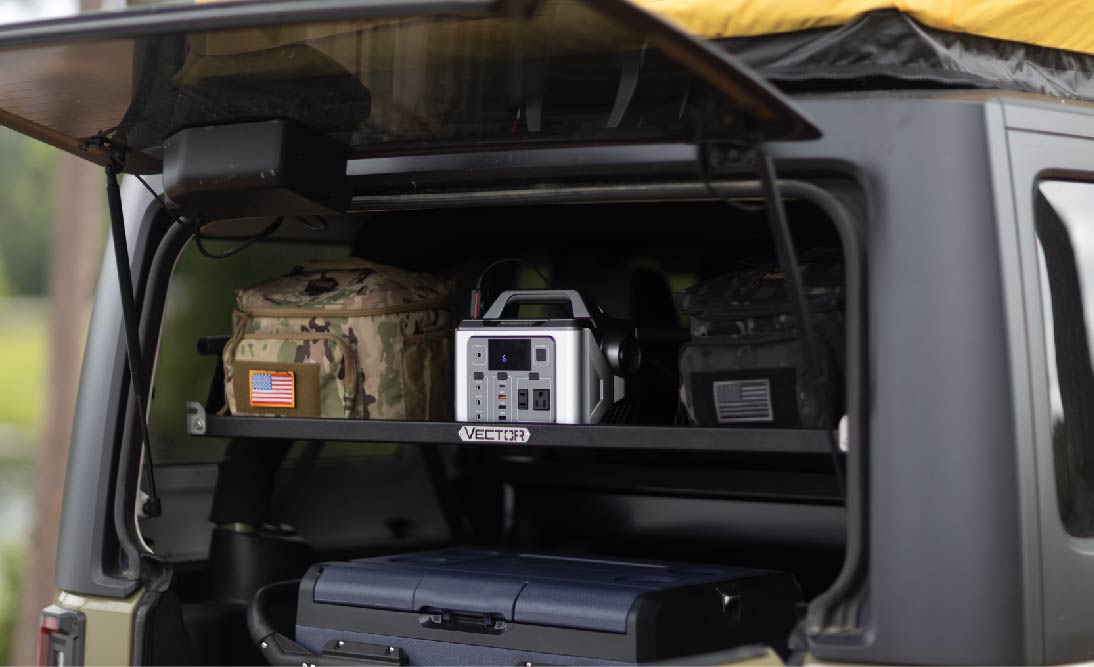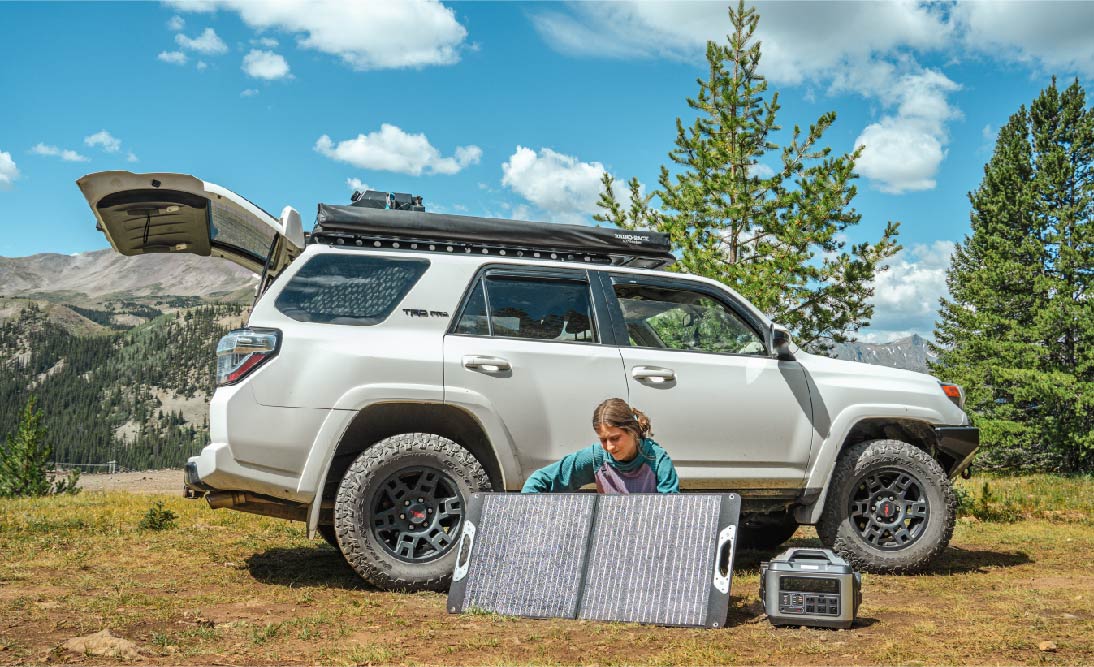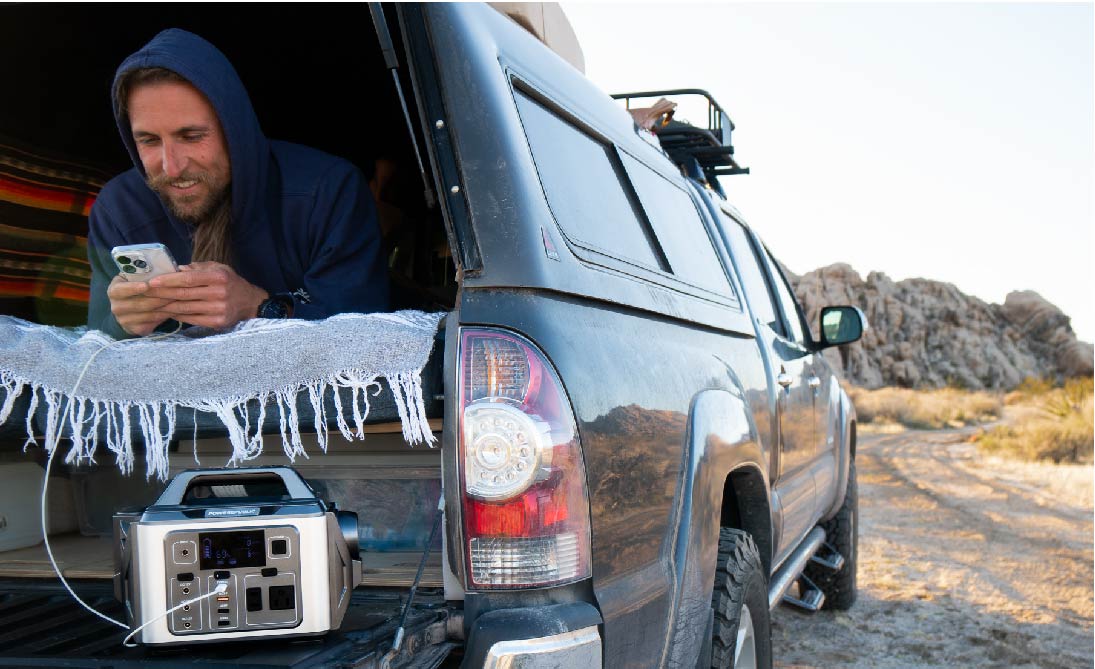Table of Contents:
LiFePO4 RV batteries, a cornerstone in the evolving world of recreational vehicle travel, offer a blend of safety, efficiency, and long-term cost-effectiveness, making them an increasingly popular choice among RV enthusiasts. These Lithium Iron Phosphate batteries stand out for their stable chemistry, reducing the risk of overheating and offering a much longer lifespan—ranging from 2000 to 5000 charge cycles—compared to traditional batteries. However, they are not without their challenges. The higher initial investment for LiFePO4 batteries can be a significant consideration for many, particularly when budgeting for the overall RV experience.
Additionally, these batteries present unique requirements, including sensitivity to extremely cold temperatures and specific charging needs, which could add complexity to their use and maintenance. Despite these factors, the advantages of LiFePO4 RV batteries, such as their lower environmental impact and minimal upkeep, continue to drive their popularity, offering a reliable and sustainable power solution for the modern traveler. In this blog, we are going to discuss every aspect of LiFePO4 RV batteries and guide you in choosing the ideal option for yourself.
What is a LiFePO4 RV Battery?
LiFePO4 batteries, short for Lithium Iron Phosphate batteries, are a type of lithium-ion battery that has become increasingly popular, especially for use in recreational vehicles (RVs).

Here's a detailed look at their characteristics:
-
Chemistry and Structure: LiFePO4 batteries use lithium iron phosphate as the cathode material, and a graphitic carbon electrode with a metallic backing as the anode. This chemistry offers several advantages over other lithium-ion battery types such as Lithium Cobalt Oxide (LiCoO2) batteries.
-
Safety and Stability: One of the key advantages of LiFePO4 batteries is their thermal and chemical stability, which provides increased safety compared to other lithium-ion batteries. They are more resistant to overheating and are less likely to undergo thermal runaway.
-
Longevity and Cycle Life: LiFePO4 batteries have a significantly longer cycle life compared to other lithium-ion types. They can typically endure 2000-5000 charge-discharge cycles, which is several times more than other lithium-ion battery types. This makes them cost-effective in the long term, despite a higher initial cost.
-
Energy Density: While LiFePO4 batteries have a lower energy density than some other types of lithium-ion batteries, they still provide sufficient power for most RV applications. Their energy density typically ranges around 90-120 Wh/kg.
-
Environmental Impact: These batteries are generally considered more environmentally friendly than other lithium-ion types. The phosphate-based cathode material is less harmful and more abundant than the cobalt used in other lithium-ion batteries.
-
Operating Temperature Range: LiFePO4 batteries operate effectively across a wide range of temperatures, making them suitable for varied climates. However, their performance can degrade in extremely cold temperatures.
-
Voltage: These batteries typically have a nominal voltage of 3.2 volts per cell, which is lower than the 3.7 volts of LiCoO2 cells. This means more cells are required to achieve the same voltage.
-
Size and Weight: LiFePO4 batteries are relatively lightweight and compact, which is advantageous for RV use where space and weight considerations are important.
-
Cost: Initially, LiFePO4 batteries are more expensive than traditional lead-acid batteries. However, their longer lifespan can make them more cost-effective over time.
-
Applications in RVs: In RVs, these batteries are used for powering various appliances and systems, from lighting to refrigeration, and often for energy storage in conjunction with solar panels.
-
Maintenance: LiFePO4 batteries require less maintenance compared to lead-acid batteries. They do not need to be topped off with water, and they can be stored without a trickle charger.
LiFePO4 RV batteries offer a combination of safety, longevity, and efficiency, making them a popular choice for RV enthusiasts looking for a reliable and sustainable power source.
How Does a LiFePO4 RV Battery Work?
LiFePO4 batteries, commonly used in recreational vehicles (RVs), operate on the same basic principles as other lithium-ion batteries, but with some unique characteristics due to their specific chemistry.

Here's a detailed look at how they work:
Basic Principle of Operation
-
Electrochemical Reaction: Like all batteries, LiFePO4 batteries work based on an electrochemical reaction. This reaction involves the movement of ions between the cathode and anode during charging and discharging
-
Cathode and Anode Materials: In LiFePO4 batteries, the cathode material is lithium iron phosphate (LiFePO4), and the anode is typically made of a carbon material, often graphite.
-
Electrolyte: The electrolyte is a lithium salt in an organic solvent, which facilitates the movement of lithium ions between the cathode and anode.
Charging Process
-
Lithium Ion Movement: When the battery is charged, lithium ions move from the cathode to the anode. The charger applies a voltage greater than the battery's voltage, pushing the lithium ions through the electrolyte and into the anode.
-
Electron Flow: Simultaneously, electrons flow from the cathode to the anode through the external circuit, providing the energy needed to power the charger or any connected device.
-
Storing Energy: The energy is stored in the form of chemical potential. The anode, containing a higher concentration of lithium ions, represents this stored energy.
Discharging Process
-
Reverse Ion Movement: When the battery powers a device, the lithium ions move back from the anode to the cathode. This movement is driven by the device drawing power from the battery, reducing the anode's voltage.
-
Electron Release: As the lithium ions move, electrons are released from the anode and flow through the external circuit to the cathode, providing electrical energy to the device.
-
Energy Delivery: The flow of electrons from the anode to the cathode through the external circuit is what powers the RV’s appliances or lighting.
Pros and Cons of LiFePO4 RV Batteries
LiFePO4 (Lithium Iron Phosphate) batteries have become increasingly popular in the RV (Recreational Vehicle) community due to their unique advantages, but like any technology, they also have some drawbacks.

Here's a detailed look at the pros and cons of LiFePO4 batteries for RV use:
Pros of LiFePO4 RV Batteries
-
Long Cycle Life: LiFePO4 batteries can last for 2000-5000 cycles or more, significantly outperforming traditional lead-acid batteries in terms of lifespan.
-
Safety: They are known for their high thermal and chemical stability, which reduces the risk of overheating and combustion, making them safer than many other types of lithium-ion batteries.
-
High Efficiency: LiFePO4 batteries have a high charge and discharge efficiency, which is beneficial for quickly capturing energy from sources like solar panels and efficiently powering appliances.
-
Stable Voltage Output: They provide a consistent voltage level throughout the discharge cycle, ensuring a stable power supply to RV appliances.
-
Low Self-Discharge: These batteries have a very low self-discharge rate, meaning they retain their charge for longer periods when not in use, which is ideal for RVs that aren't used continuously.
-
Environmentally Friendly: The materials in LiFePO4 batteries are less toxic and more environmentally benign compared to other lithium-ion batteries.
-
Lightweight and Compact: Compared to traditional lead-acid batteries, LiFePO4 batteries are lighter and often more compact, which is important in RVs where space and weight are limited.
-
Wide Operating Temperature Range: They perform well in a wide range of temperatures, though extreme cold can impact performance.
-
No Maintenance Required: Unlike lead-acid batteries, they don't require maintenance like watering and can be stored without a trickle charger.
-
Depth of Discharge: LiFePO4 batteries can be discharged up to 80-90% of their capacity without significant degradation, unlike lead-acid batteries which are typically limited to 50% discharge.
Cons of LiFePO4 RV Batteries
-
High Initial Cost: The biggest downside is the cost. LiFePO4 batteries are significantly more expensive upfront compared to traditional lead-acid batteries.
-
Cold Temperature Sensitivity: While they operate well in a range of temperatures, their performance and charging efficiency can be reduced in extremely cold temperatures.
-
Complex Charging Requirements: LiFePO4 batteries require a specific charging profile and a compatible charger, which can add to the overall cost and setup complexity.
-
Limited High Current Discharge: While suitable for most RV applications, they may not be ideal for extremely high current draw applications compared to some other battery types.
-
Weight for Large Systems: Although lighter than lead-acid batteries, for very large systems, the weight can still be significant and may impact vehicle performance.
-
Disposal and Recycling: While more environmentally friendly than other types, recycling options for lithium-based batteries can still be limited compared to more established technologies like lead-acid.
-
Less Proven in Long-Term Use: As a relatively newer technology (compared to lead-acid), there's less long-term data available for LiFePO4 batteries in RV applications.
While LiFePO4 batteries offer many advantages for RV use, including safety, efficiency, and longevity, their high initial cost and specific charging requirements are important factors to consider. The decision to use these batteries will depend on the specific needs, budget, and usage patterns of the RV owner.
Lithium-Ion VS. LiFePO4 RV Batteries
We know that lithium-ion and LiFePO4 batteries are two popular technology options. Let's examine their similarities and differences to give you a clearer understanding of each. This comparison will assist you in making a more informed decision when choosing the ideal option for your needs.

Similarities
-
Lithium-Based Chemistry: Both are types of lithium-ion batteries and use lithium ions moving between the cathode and anode during charge and discharge cycles.
-
Higher Energy Density Than Lead-Acid: Both offer a higher energy density compared to traditional lead-acid batteries, allowing for smaller, lighter battery packs for the same energy storage.
-
Maintenance-Free: Both types of batteries are generally maintenance-free, a significant advantage over lead-acid batteries that require regular maintenance.
-
Deep Discharge Capability: Lithium-ion and LiFePO4 batteries can be deeply discharged without significant degradation, offering more usable capacity than lead-acid batteries.
-
Efficiency: Both exhibit high charge and discharge efficiency, which is beneficial for quick energy capture and effective power delivery.
-
Environmental Impact: They are more environmentally friendly compared to lead-acid batteries, though recycling options and processes can vary.
Differences
Chemical Composition:
-
Lithium-Ion: Typically uses lithium cobalt oxide (LiCoO2) or similar compounds for the cathode.
-
LiFePO4: Uses lithium iron phosphate as the cathode material.
Safety and Stability:
-
Lithium-Ion: Can be more prone to overheating and thermal runaway if not properly managed.
-
LiFePO4: Known for higher thermal and chemical stability, making them safer and less prone to overheating.
Lifecycle:
-
Lithium-Ion: Generally, they have shorter lifecycles, around 500-1000 charge cycles.
-
LiFePO4: Longer lifespan, typically 2000-5000 cycles.
Energy Density:
-
Lithium-Ion: Higher energy density, which means more energy storage per unit of weight.
-
LiFePO4: Slightly lower energy density but still sufficient for most RV applications.
Voltage:
-
Lithium-Ion: Higher nominal voltage per cell (about 3.6V to 3.7V).
-
LiFePO4: Nominal voltage of about 3.2V per cell.
Cost:
-
Lithium-Ion: Generally less expensive per unit of energy stored than LiFePO4.
-
LiFePO4: Higher initial cost, but the cost can be offset by longer lifespan and durability.
Temperature Sensitivity:
-
Both types can be affected by extreme temperatures, but LiFePO4 batteries often have a wider operating temperature range.
Application Suitability:
-
Lithium-Ion: Better for applications requiring high energy density and lighter weight.
-
LiFePO4: Preferred for applications where safety, longevity, and stability are more important.
Overall, while both Lithium-Ion and LiFePO4 batteries offer advantages for RV use, the choice between them often depends on specific needs such as budget, safety considerations, expected lifespan, and energy requirements. LiFePO4 batteries, with their safety and longevity, are often preferred for RV applications, despite their higher initial cost.
How To Choose The Ideal LiFePO4 RV Batteries?
Choosing the ideal LiFePO4 (Lithium Iron Phosphate) battery for your RV involves considering several factors, including your power requirements, the capacity of the battery, the physical size and weight, lifespan, and your budget.

Let's break down these factors with detailed calculations and examples:
1. Assess Your Power Requirements
First, you need to calculate your daily power usage in watt-hours (Wh). This involves listing all the appliances and devices you use in your RV and how long you use them each day.
For example:
-
LED lights: 10W, used for 5 hours/day = 10W x 5h = 50Wh/day
-
Refrigerator: 60W, runs 24 hours (but actual running time is about 8 hours due to cycling) = 60W x 8h = 480Wh/day
-
TV: 50W, used for 3 hours/day = 50W x 3h = 150Wh/day
-
Other devices (laptops, fans, etc.): 100W total, used for 2 hours/day = 100W x 2h = 200Wh/day
Total daily usage = 50Wh + 480Wh + 150Wh + 200Wh = 880Wh/day
2. Determine Battery Capacity Needed
LiFePO4 batteries are typically rated in ampere-hours (Ah). To determine the capacity you need, convert your daily power usage into Ah and consider the battery's nominal voltage (usually 12V for RV applications).
Using the above example:
-
Total daily usage = 880Wh
-
Assuming a 12V system: Required capacity in Ah = Total Wh / Voltage = 880Wh / 12V = 73.33Ah
However, you should add a buffer (around 20-30%) to account for days with higher usage and to avoid deep discharging the battery, which can reduce its lifespan.
Required capacity with buffer = 73.33Ah x 1.25 = 92Ah
3. Consider Depth of Discharge (DoD)
LiFePO4 batteries can be discharged up to 80-90% without significant degradation. It's wise to consider this in your capacity calculation.
For a 90% DoD:
-
Adjusted capacity = Required capacity / DoD = 92Ah / 0.9 = 102Ah
-
So, you should look for a battery with at least 102Ah capacity.
4. Physical Size and Weight
Check the physical dimensions and weight of the battery to ensure it fits in your designated space in the RV. LiFePO4 batteries are lighter and more compact compared to lead-acid batteries, which is advantageous in RVs.
5. Budget and Lifespan
LiFePO4 batteries have a higher upfront cost but a longer lifespan, which can make them more cost-effective in the long run. Calculate the total cost of ownership by considering the number of charge cycles and years of service they offer.
6. Additional Considerations
-
Charging Requirements: Ensure you have a compatible charger that can properly charge LiFePO4 batteries.
-
Temperature Range: Consider the operating temperature range, especially if you travel to places with extreme climates.
-
Warranty and Support: Check the warranty period and manufacturer support.
-
Brand Reputation: Opt for brands with good reviews and reliability on websites like Trustpilot.
7. Example Scenario
Suppose you choose a 100Ah LiFePO4 battery for your RV. The cost is $800, and it has a lifecycle of 3000 cycles. The cost per cycle would be $800 / 3000 = $0.27. If the battery lasts 8 years with daily use, the yearly cost is $800 / 8 = $100/year.
Choosing the right LiFePO4 battery for your RV involves careful consideration of your power needs, battery capacity, budget, and the physical constraints of your vehicle. By doing thorough calculations and considering these factors, you can select a battery that meets your needs efficiently and cost-effectively.
POWEREPUBLIC LiFePO4 RV Batteries
We know that choosing the right LiFePO4 RV batteries is not an easy task, as it requires careful evaluation of your power needs, budget, and other factors. Additionally, it takes time and professional knowledge to install and integrate the batteries with your system.

For those who want to save time and may not possess extensive professional knowledge, and looking for a compact alternative, we recommend two LiFePO4 RV batteries from POWEREPUBLIC: the T2200 and T3000 models.
For a better understanding and comparison of each, please refer to the table below:
|
Models |
Features and Specs |
Est.Operation Time(hours) |
|
2200W/2240Wh, Surge 4500W LiFePO4 Batteries with Lifecycles of 3000+ User-Friendly LCD Screen for Monitoring 15 Different Output Ports Aluminum Alloy Body for Durability LED Light On The Side Solar Panel Compatibility(230W Max) |
TV(50-100W): 19 to 38 hours Refrigerator(150W): 12.5 hours Microwave(1000W): 2 hours Air Conditioner(1500W): 1.3 hours Water Pump(60W): 31.5 hours Laptop Charger(60W): 31.5 hours Coffee Maker(600W): 3 hours Toaster(800W): 2.4 hours Portable Heater(1500W): 1.3 hours Electric Grill(1500W): 1.3 hours Ceiling Fan(50W): 38 hours Electric Kettle(1200W): 1.5 hours Hair Dryer(1200W): 1.5 hours Battery Charger(50W): 38 hours |
|
|
3000W/3200Wh, Surge 6000W LiFePO4 Batteries with Lifecycles of 3000+ User-Friendly LCD Screen for Monitoring 15 Different Output Ports Aluminum Alloy Body for Durability LED Light On The Side Solar Panel Compatibility(230W Max) |
TV(50-100W): 27 to 54 hours Refrigerator(150W): 18 hours Microwave(1000W): 2.5 hours Air Conditioner(1500W): 1.8 hours Water Pump(60W): 45 hours Laptop Charger(60W): 45 hours Coffee Maker(600W): 4.5 hours Toaster(800W): 3.4 hours Portable Heater(1500W): 1.8 hours Electric Grill(1500W): 1.8 hours Ceiling Fan(50W): 38 hours Electric Kettle(1200W): 2.2 hours Hair Dryer(1200W): 2,2 hours Battery Charger(50W): 54 hours |
-
Working Time(hours)= Capacity of the model(Wh) * 0.85 / Power of the item(W)
-
Check out the ratings and reviews of POWEREPUBLIC on Trustpilot.
FAQ I: What’s the Lifespan of LiFePO4 RV Batteries?
The lifespan of LiFePO4 (Lithium Iron Phosphate) RV batteries is typically measured in charge cycles. A single charge cycle involves the battery being fully charged and then discharged. On average, LiFePO4 batteries have a lifespan of about 2000 to 5000 charge cycles.

Example Calculation:
-
If you use and recharge your battery every day (1 cycle per day), with a lifespan of 3000 cycles, your LiFePO4 battery could last about 3000 days.
-
In years, this is approximately 3000 days / 365 days per year = 8.2 years.
Keep in mind that the actual lifespan can be longer if the battery isn't fully cycled every day. Partial discharges reduce the wear on the battery, extending its overall lifespan.
FAQ II: Can I Use a LiFePO4 Battery While Charging It?
Yes, you can use a LiFePO4 battery while it's charging, a process often referred to as "pass-through" charging. This is particularly useful in RV settings where the battery might be continuously charged through solar panels or a generator while still powering appliances.

Example Scenario:
-
Suppose your RV is parked in a location with solar charging available. During the day, the solar panels charge the LiFePO4 battery, but you also have appliances like a refrigerator or lights running.
-
The battery can be simultaneously recharged while providing power to these appliances.
-
However, the efficiency of this setup depends on the charging input (e.g., solar panel output) and the power demand from your appliances.
It's important to have a properly sized charging system to ensure that the charging input can accommodate the simultaneous power draw of the appliances. If the power draw is greater than the charging input, the battery will still discharge, albeit at a slower rate.
Final Thoughts
In summary, LiFePO4 RV Batteries emerge as a pivotal choice for recreational vehicle enthusiasts, blending safety, efficiency, and longevity. These batteries, known for their stable chemistry, are more resistant to overheating, making them safer compared to other types. Their notable longevity, with a lifespan ranging from 2000 to 5000 charge cycles, makes them a cost-effective solution despite the higher initial investment. The ability to use these batteries during charging enhances their practicality, especially in solar-powered setups.
LiFePO4 batteries also demonstrate a lower environmental impact and require minimal maintenance, adding to their appeal. While they face challenges in extremely cold temperatures and have specific charging requirements, their overall advantages solidify their status as a top choice. For RV users, LiFePO4 batteries, such as POWEREPUBLIC T2200 and T3000 models, offer a reliable, efficient, and long-lasting power source, aligning with the needs of modern, sustainable traveling.
Choose POWEREPUBLIC Portable Power Stations for your next destination.
